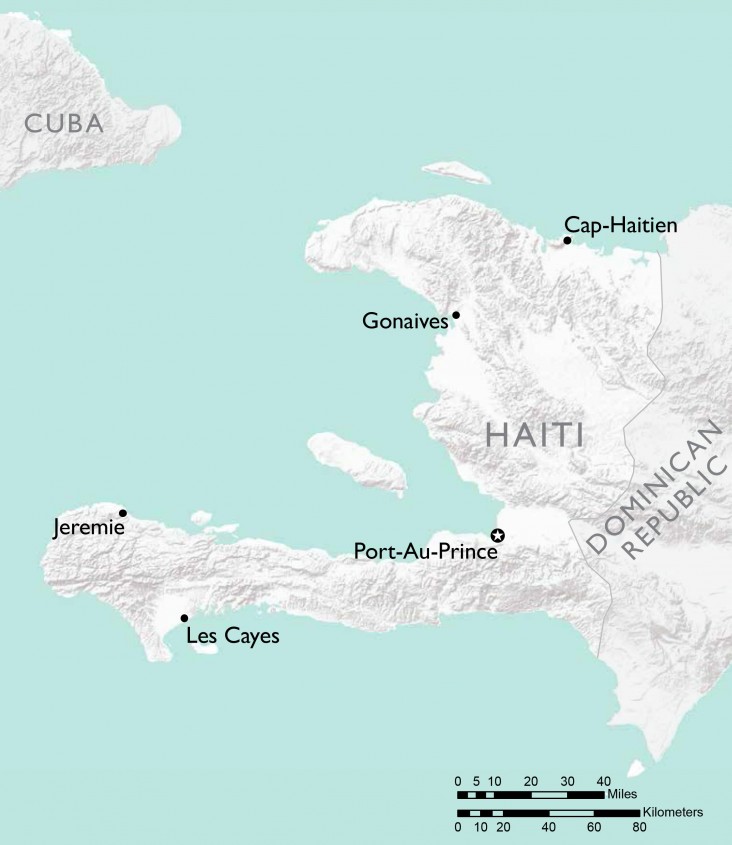Home » What We Do » Agriculture and Food Security » Food Assistance » Country Fact Sheets » Food Assistance Fact Sheet - Haiti
- What We Do
- Agriculture and Food Security
- Democracy, Human Rights and Governance
- Economic Growth and Trade
- Education
- Ending Extreme Poverty
- Environment and Global Climate Change
- Gender Equality and Women's Empowerment
- Global Health
- Water and Sanitation
- Working in Crises and Conflict
- U.S. Global Development Lab

Map of Haiti
USAID
August 7, 2017
Food Security Situation
- Haiti remains the only low-income country in the Americas. Three-quarters of the population lives on less than $2 per day, making Haiti extremely vulnerable to price spikes in the global food market.
- In addition to experiencing its third consecutive year of drought, Haiti was hit by Hurricane Matthew—the strongest registered hurricane in a decade—in October 2016. More than six months later, the storm's impact continues to drive elevated levels of food insecurity in the worst-affected communities.
- In localized areas of Sud, Nippes, Nord, and Nord-Est departments, sudden environmental shocks--including flooding and dry spells--have delayed or destroyed maize and bean crops.
- According to the Famine Early Warning System Network (FEWS NET), spring harvests have lowered staple food prices and increased the availability of work, resulting in improved food security levels across the country. Most populations in Haiti are expected to experience Minimal (IPC Phase 1) levels of food insecurity through January 2018*. Some populations still recovering from prior shocks--notably Hurricane Matthew--are expected to experience Stressed (IPC Phase 2) levels of food insecurity during this period, according to FEWS NET.
Food Assistance Programs
- In response to Hurricane Matthew, the Office of Food for Peace (FFP) partnered with non-governmental organizations and the UN World Food Program (WFP) to provide emergency food assistance to hurricane-affected communities across the country. This assistance--including U.S. in-kind food aid, locally procured food aid, cash transfers for food, cash-for-work activities, and agricultural inputs--has reached more than one million people in Haiti.
- FFP partners with CARE and the Government of Haiti to support the establishment of a social safety net program that improves vulnerable household access to locally produced, nutritious foods. Aimed at both boosting food security and reducing malnutrition, this multi-year development program provides 18,150 households with monthly food vouchers and 205,000 households with maternal and child health and nutrition services.
Food for Peace Contributions
Total Contributions:
| U.S. Dollars | Metric Tons | |
|---|---|---|
| Fiscal Year 2017 | $49.2 million | 10,322 MT |
| Fiscal Year 2016 | $33.9 million | 2,670 MT |
| Fiscal Year 2015 | $17.3 million | 3,770 MT |
*The Integrated Phase Classification (IPC) is a standardized tool that aims to classify the severity and magnitude of food insecurity. The IPC scale, which is comparable across countries, ranges from Minimal (IPC 1) to Famine (IPC 5).
FY 2017 contribution based on funds obligated to date.
Country Specific Guidance
- Haiti Baseline Study Report, May 2015 (French)
- Haiti Baseline Study Report, May 2015 (English)
- Fiscal Year 2013 Country Specific Information: Haiti
- Haiti Country Specific Information - Fiscal Year 2012
- Haiti Country Specific Information, Annex 1 - Fiscal Year 2012
- Haiti Prospective Food Security Assessment
- January 30, 2013 Pre-Award Meeting Notes
- Food Voucher Workshop, Jeremie, Haiti, September, 2012







Comment
Make a general inquiry or suggest an improvement.